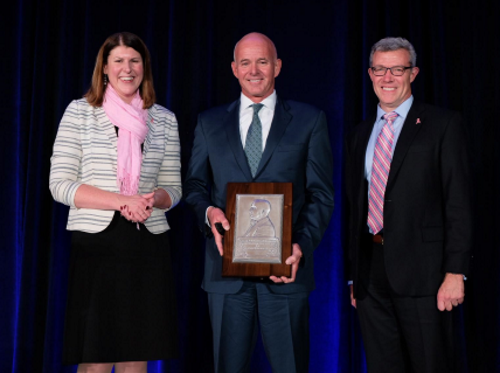As expectations for automated vehicles or AVs are becoming more realistic in terms of technical challenges, capabilities, and deployment horizons, state departments of transportation are stepping up their involvement to test and prepare AVs for broad deployment on U.S. roads.
A knowledge session hosted by CDM Smith during the 2020 annual meeting of the American Association of State Highway and Transportation Officials highlighted the efforts of AV offices or programs established by state DOTs – detailing their strategies and ongoing work with AV companies.
“Our goal is to continue to evolve the AV testing process alongside local partners – that has been the successful key for us; working collaboratively and working to make AV deployment a success for everyone,” noted Kevin Biesty, deputy director for policy at the Arizona Department of Transportation.
Biesty explained that the Arizona DOT has been refining its AV policies and regulations since 2010; constantly updating them as the technology continues advancing rapidly.
“We maintain regular dialog with other state and local authorities as well as the AV companies testing here,” he said. “We’ve developed law enforcement protocols and update that as the technology matures. We also maintain a 24/7 reporting system, so anytime there is an incident with one of these vehicles on a public road it gets reported into this system so we are aware of what is going on.”
Darran Anderson, director of strategy and innovation for the Texas Department of Transportation, said not only is a different “legal framework” needed for AVs, his agency is also working collaboratively at the local level – with community associations, counties, and universities – to educate people about the operational particulars of AVs.
“The goal is to create a system to help everyone operate vehicles in safe manner,” he said.
Mark Kopko – director of the Office of Transformational Technology within the Pennsylvania Department of Transportation – noted it is his group’s job to investigate technology that may have ‘cross cutting’ impacts across multiple areas of a state DOT while also coordinating with stakeholders to ensure “consistency and interoperability” of that technology.
“There are 2,560 municipalities across Pennsylvania when it comes to ensuring AVs operate consistently,” he explained. “We also need to look at things from regional perspective as well. We also know ‘level of consistency’ is important for interstate trucking — how to make sure the technology maintains synergy between states and larger regions. The last part is education – it is imperative for people to understand how AVs work. It is not the role of government to preach or vouch for one side or the other when it comes to this technology. Rather, it is to help remove misconceptions regarding AVs so the public can form their own understanding about them.”
Kristin White, executive director of Minnesota’s Connected and Automated Vehicle Office, added that her group’s philosophy regarding CAVs is that “we cannot solve tomorrow’s problems with yesterday’s toolbox.”
That is why she considers “education to be our number one priority” when it comes to AV technology. “Recent surveys noted that many Americans distrust this technology,” White said. “That is why we must consult and collaborate with communities – taking a ‘human-centered’ design approach to develop a toolkit for all our regional partners to use.”
She explained that the lessons incorporated in that “toolkit” include the need to develop very clean, plain-language goals and taking time to develop a strategic plan/roadmap for the testing and deployment of AVs.
It also includes the need to use an “equity lens” to discover whose voices may be missing from the AV testing/deployment discussion as well as “better messaging” as use of different terminology – such as CAV and Cooperative Automated Transportation or “CAT” – can lead to confusion.
“Of course you have to think about business and use cases for this new technology,” she added. “But you also need to look that the use cases highlight the benefit to the communities AVs will be deployed in. This technology can exponentially impact the communities they serve. That should be highlighted.”
 AASHTO Annual Meeting
AASHTO Annual Meeting


